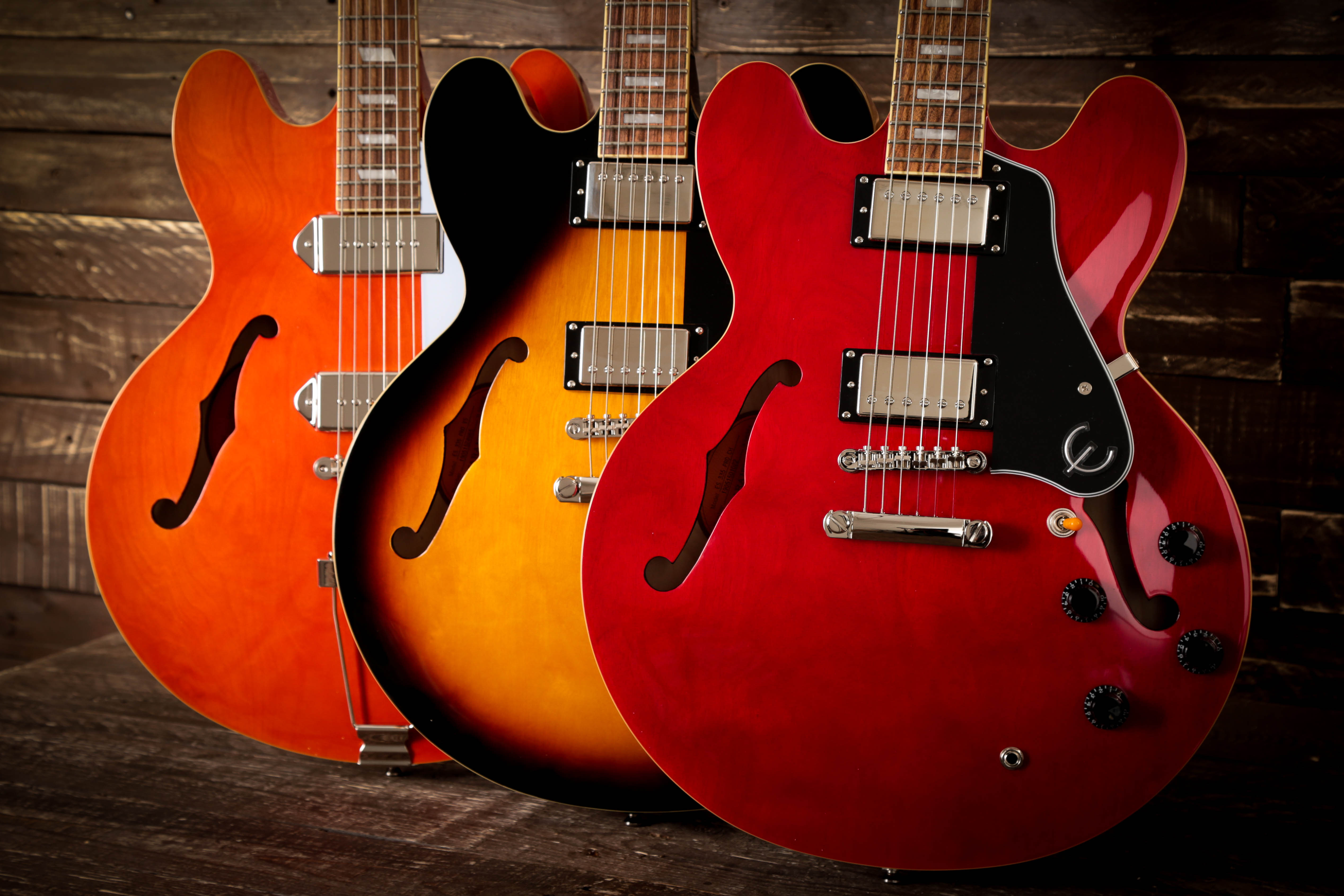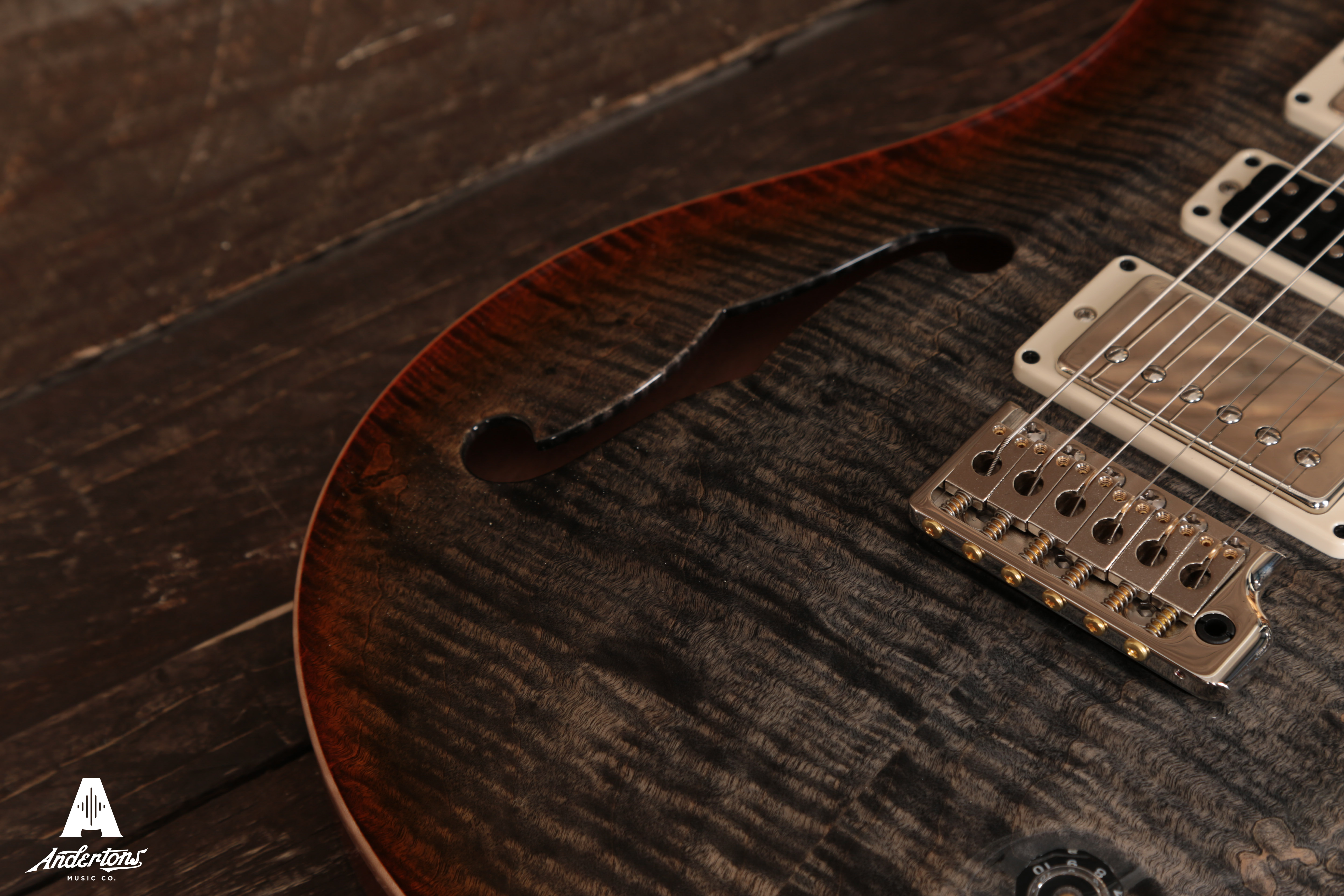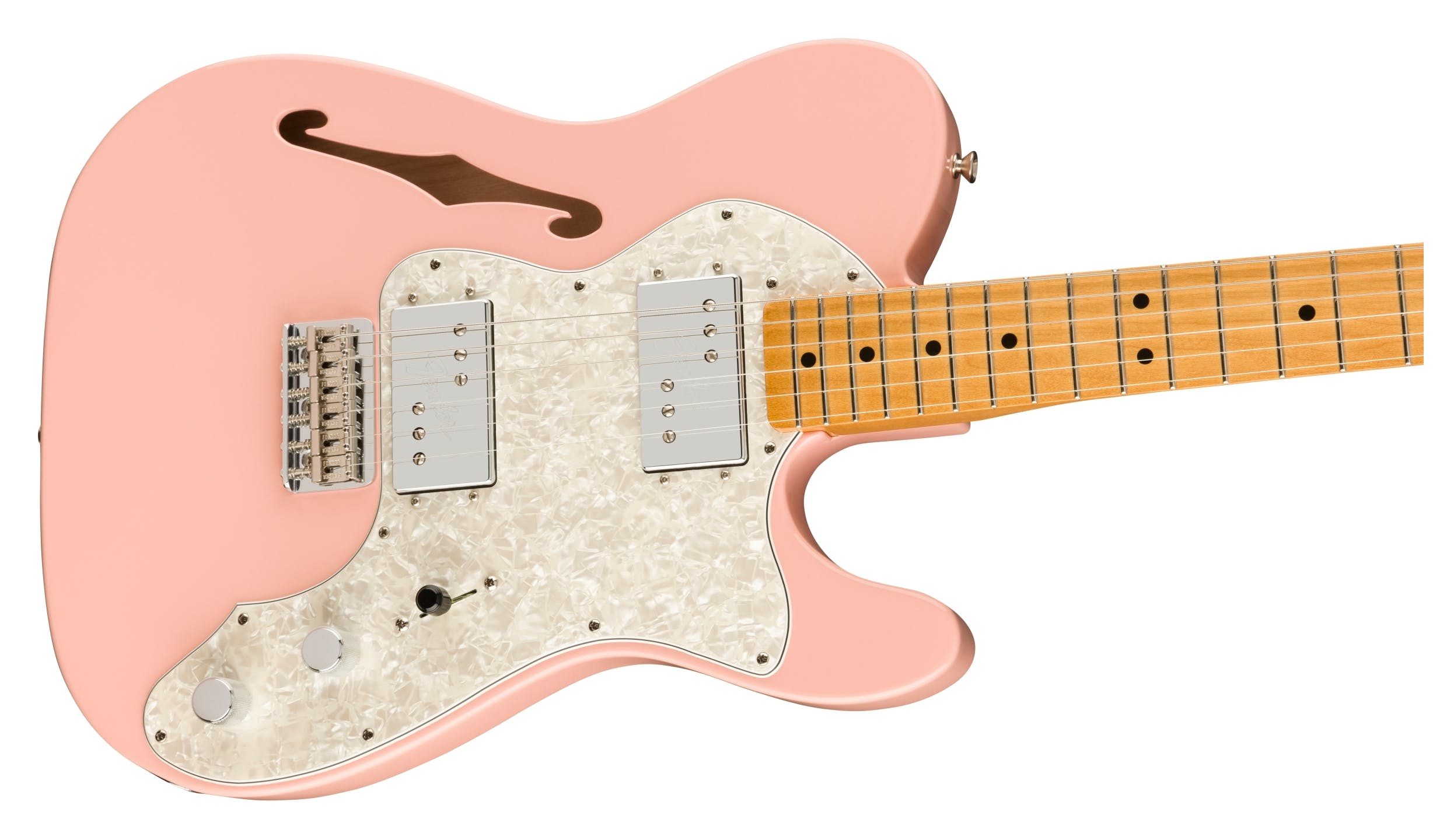The hollow body guitar and its semi-hollow successor are classic designs that are still as popular as ever for blues, jazz and rock guitarists. They are highly versatile guitars with a unique style and sound – but what sets them apart?
Here’s a quick breakdown:
- Hollow body guitars are primarily used in jazz and blues music
- They produce clear, warm, rounded tones
- Semi-hollow body guitars feature a solid centre block
- This makes semi-hollows more resistant to feedback and suitable for higher-gain settings
- Semi-hollow guitars are great for rock, indie and other modern genres
Both styles maintain a strong presence in today’s music landscape. Admittedly, much of the attraction of hollow guitars is due to their retro aesthetic and vintage charm, but beyond that they provide specific sound qualities and unique tones that players still rely on in the 2020s, both in studio and on stage.
Hollow / Semi-Hollow Body Guitars
Browse
Hollow / Semi-Hollow Body Guitars

Hollow Body Guitars
Hollow body electric guitars first emerged in the 1930s, designed to compete with the volume of big band ensembles. Their archtop shape and signature F-hole design are instantly recognisable features that give them a distinctive look and sound. With their large open bodies, higher string action, and low-output pickups, hollow bodies still make use of vintage features that set them apart from today’s solid body guitars.
What makes the hollow body so great as a jazz instrument is its clean, smooth tones, but it’s also possible to add a little grit when played through a loud valve amp. Their acoustic-like resonance gives them dynamic qualities similar to an electro-acoustic, but with a warmer midrange, often described as more “rounded” than the brighter character of a true acoustic.
One limitation is that hollow bodies are highly prone to feedback at higher volumes. However, many players embrace this quirk. Gary Clark Jr., for example, often uses hollow bodied Epiphone Casinos when playing live to get a gritty blues rock tone, using his guitar volume to delicately control the feedback from the amp.
Legendary players like George Benson and Chet Atkins favoured hollow bodies for their warmth and articulation, sounding incredible when using slide techniques. Renowned alternative players such as Steve Howe (Yes) and Geordie Walker (Killing Joke) also tapped into their potential for ambient sections, using them to create atmosphere and sustain.
Semi-Hollow Guitars

Today, semi-hollow body electric guitars are arguably more popular, thanks to their versatility and reliability in modern genres.
What sets them apart from their older relative is the use of a solid wood centre block to mount pickups. This reduces feedback while preserving the airy resonance of a hollow design, meaning they are much better equipped for music requiring overdrive or distortion. From blues-rock to indie, grunge or even modern pop, semi-hollows deliver classic tone with great versatility, leading to their increasing popularity across a wide range of styles.
B.B. King was one of the first players to bring the semi-hollow design into the mainstream with his famous “Lucille” Gibson ES-355, and pretty much everyone since has been inspired by his fiery blues sound.
Common semi-hollow features include:
- A thinline body (sleeker, more ergonomic)
- A single F-hole
- A fixed stopbar or Bigsby tremolo bridge.
These elements make them great choices for live performance, offering a balance between classic design and contemporary playability. Just ask Dave Grohl, whose signature Pelham Blue Gibson DG-335 has been a fixture in Foo Fighters’ massive stadium rock sound.
Other semi-hollow legends include Chuck Berry, Eric Clapton, and Noel Gallagher. Yet, Larry Carlton, aka “Mr. 335”, remains one of the most closely associated artists. In 2020, he partnered with Sire Guitars to launch a signature line that included some verry affordable options, making high quality semi-hollows more accessible to guitarists of all levels, a trend that continues today.




Responses & Questions